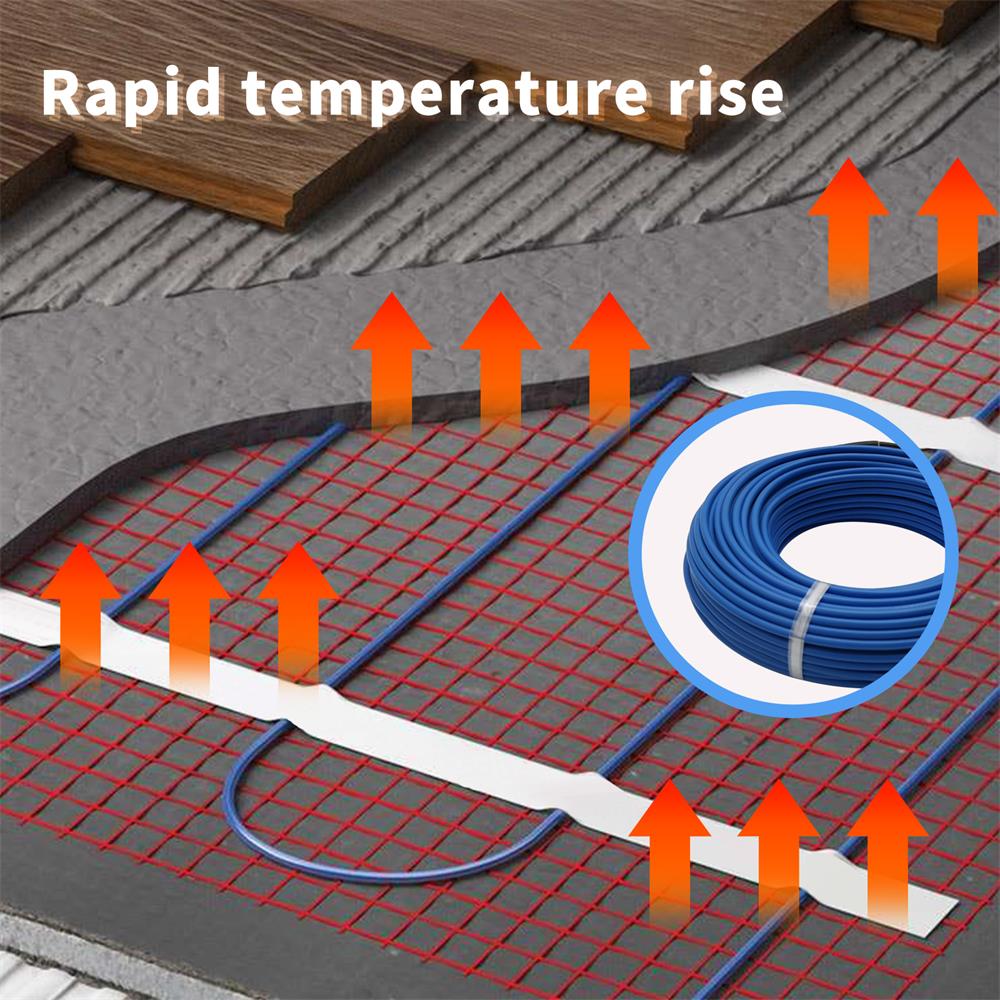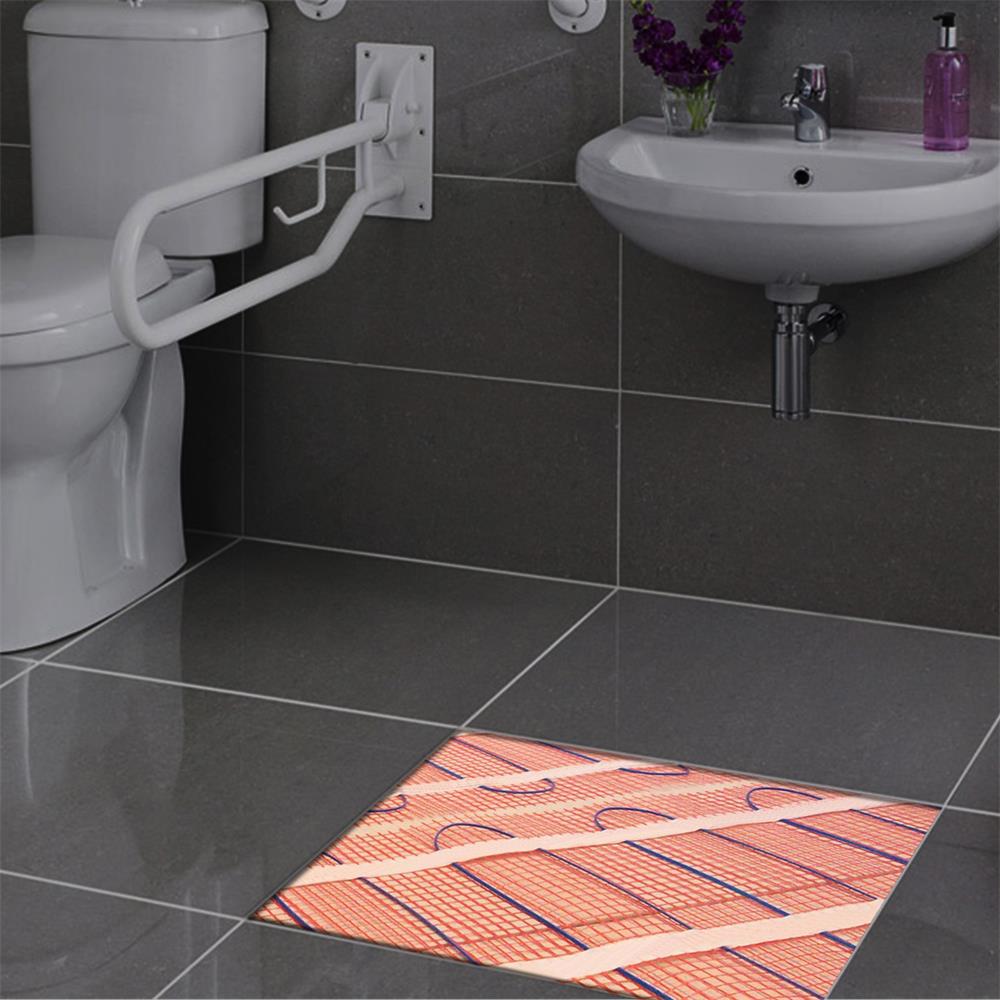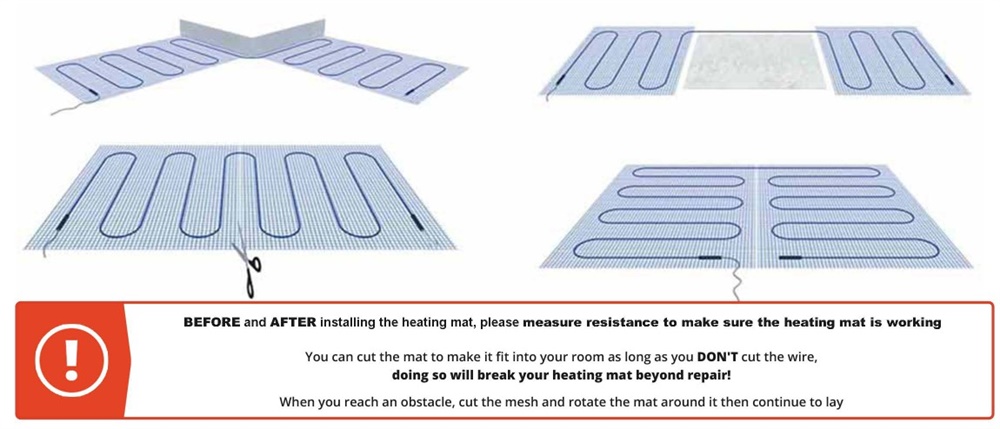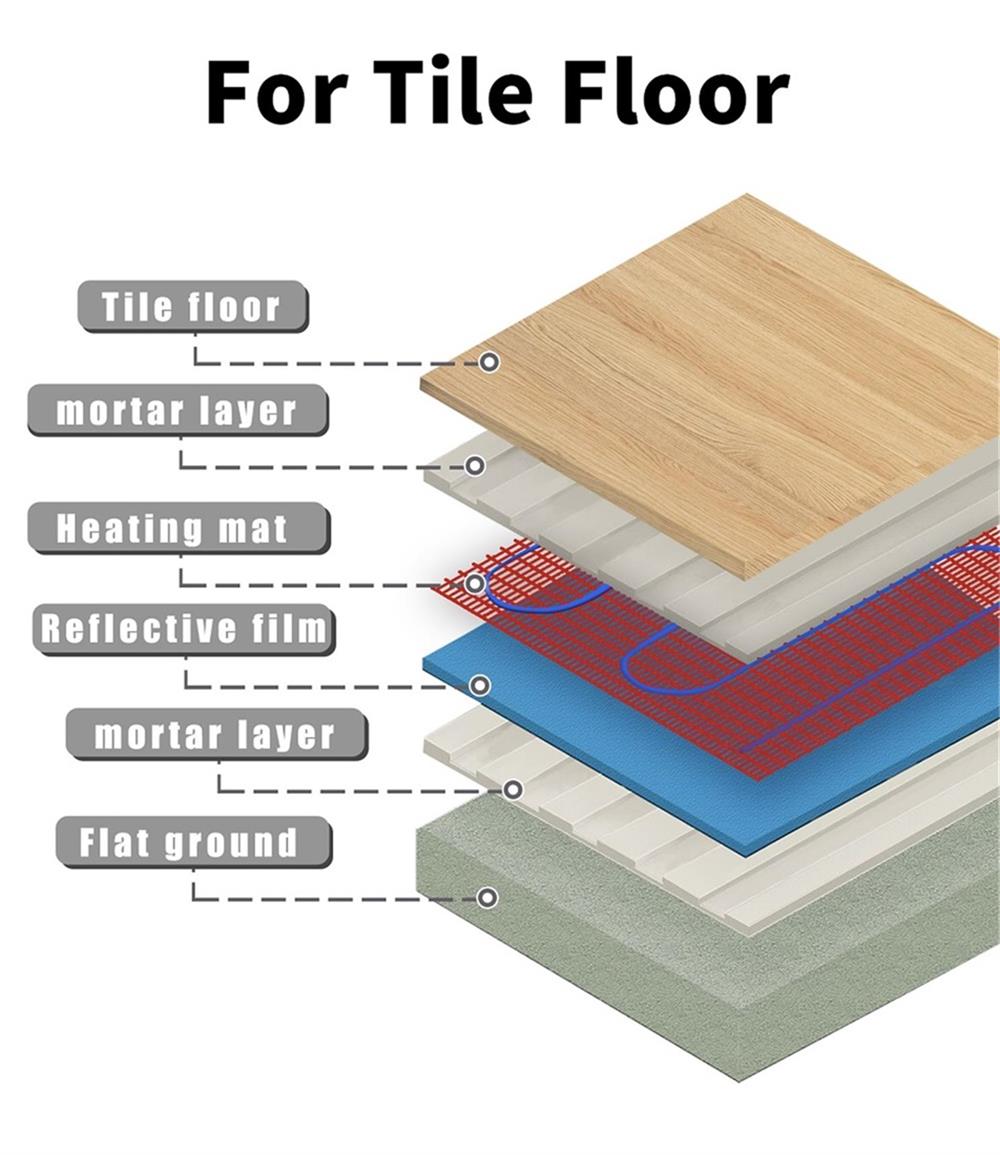Underfloor heating system, as an efficient, energy-saving and environmentally friendly heating method, is more and more favored by architects and owners. In particular, the floor heating pad, with its easy installation and relatively low cost characteristics, has shown a unique advantage in renovation projects and new buildings. The purpose of this paper is to discuss the application of floor heating pad in these two types of building projects, evaluate its applicability, and predict its future development trend.

Technical characteristics and advantages of floor heating pad
1.Easy installation: The thin and light characteristics of the floor heating pad make it convenient to lay under the ground material, without complex pipeline system, which greatly shortens the construction period.
2.Energy saving and high efficiency: electric floor heating has high thermal efficiency, can quickly respond to temperature changes, achieve accurate temperature control, and reduce energy waste.
3.Space flexibility: Especially suitable for local heating needs, the heating area can be flexibly adjusted according to the use of the room.
4.Simple maintenance: Because there is no liquid circulation system, the maintenance cost and failure rate of the floor heating pad are relatively low.

Application of floor heating pad in renovation project
1. No need to destroy the original structure: traditional water heating systems need to lay pipes, which often involves the excavation and reconstruction of the ground. The floor heating pad can be installed directly on the existing ground, reducing the damage to the building structure.
2. Quick implementation: The installation process of the floor heating pad is simple and quick, and can be completed in a very short time, which is a huge advantage for owners who want to resume use as soon as possible.
3. Enhance comfort and value: Through the installation of floor heating MATS, not only improve the comfort of the living environment, but also increase the market value of the house.

Application of floor heating pad in new building
In new construction projects, floor heating MATS have also shown good applicability. Designers can pre-plan the layout of the floor heating pad according to the functional zoning and user needs of the building to achieve a more personalized and efficient heating scheme. In addition, the installation of floor heating MATS in new buildings is not restricted by the existing structure, and can be more flexible to integrate with other building systems, such as intelligent temperature control systems, further improving energy efficiency and user experience.

Although floor heating pads show great potential in renovation and new construction projects, there are still some challenges. The first is the cost issue, although its installation and maintenance costs are relatively low, but the initial investment is still higher than traditional heating systems. Secondly, electric heating has higher requirements for power supply, which may be a limiting factor in some areas where power resources are tight.